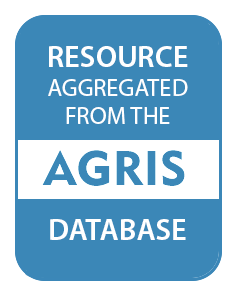What is AGRIS?
AGRIS (International System for Agricultural Science and Technology) is a global public database providing access to bibliographic information on agricultural science and technology. The database is maintained by CIARD, and its content is provided by participating institutions from all around the globe that form the network of AGRIS centers (find out more here). One of the main objectives of AGRIS is to improve the access and exchange of information serving the information-related needs of developed and developing countries on a partnership basis.
AGRIS contains over 8 million bibliographic references on agricultural research and technology & links to related data resources on the Web, like DBPedia, World Bank, Nature, FAO Fisheries and FAO Country profiles.
More specifically
AGRIS is at the same time:
A collaborative network of more than 150 institutions from 65 countries, maintained by FAO of the UN, promoting free access to agricultural information.
A multilingual bibliographic database for agricultural science, fuelled by the AGRIS network, containing records largely enhanced with AGROVOC, FAO’s multilingual thesaurus covering all areas of interest to FAO, including food, nutrition, agriculture, fisheries, forestry, environment etc.
A mash-up Web application that links the AGRIS knowledge to related Web resources using the Linked Open Data methodology to provide as much information as possible about a topic within the agricultural domain.
Opening up & enriching information on agricultural research
AGRIS’ mission is to improve the accessibility of agricultural information available on the Web by:
- Maintaining and enhancing AGRIS, a bibliographic repository for repositories related to agricultural research.
- Promoting the exchange of common standards and methodologies for bibliographic information.
- Enriching the AGRIS knowledge by linking it to other relevant resources on the Web.
AGRIS is also part of the CIARD initiative, in which CGIAR, GFAR and FAO collaborate in order to create a community for efficient knowledge sharing in agricultural research and development.
AGRIS covers the wide range of subjects related to agriculture, including forestry, animal husbandry, aquatic sciences and fisheries, human nutrition, and extension. Its content includes unique grey literature such as unpublished scientific and technical reports, theses, conference papers, government publications, and more. A growing number (around 20%) of bibliographical records have a corresponding full text document on the Web which can easily be retrieved by Google.
Members:
Resources
Displaying 3696 - 3700 of 9579Protected areas do not fulfil the wintering habitat needs of the trans-Saharan migratory Montagu’s harrier
Populations of migratory birds can be affected by events happening at both breeding and wintering grounds. The Sahel is a vast region holding a large number of wintering trans-Saharan migratory European birds, and current land-use changes there may represent a threat for these species. We used satellite tracking data from the migratory Montagu’s harrier to evaluate habitat use of the species during the wintering season, and whether the current network of protected areas is effective to provide their habitat needs during that season.
Ecological-economic zoning of the territory of the Republic of Belarus for the purposes of land use planning
The article presents ecological and economic zoning of the territory of the Republic of Belarus for the purposes of land use planning by the method of average differences, taking into account the factors which influence the efficiency of agricultural lands usage.
Airports offer unrealized potential for alternative energy production
Scaling up for alternative energy such as solar, wind, and biofuel raises a number of environmental issues, notably changes in land use and adverse effects on wildlife. Airports offer one of the few land uses where reductions in wildlife abundance and habitat quality are necessary and socially acceptable, due to risk of wildlife collisions with aircraft. There are several uncertainties and limitations to establishing alternative energy production at airports, such as ensuring these facilities do not create wildlife attractants or other hazards.
Detection and analysis of land-use and land-cover changes in the Midwest escarpment of the Ethiopian Rift Valley
This study detects patterns of land-use and land-cover changes in the last three decades (1972–2004) and analyses its causative factors in the Upper Dijo River catchment, Midwest escarpment of Ethiopian Rift Valley. Data captured through the synergy of an aerial photo, satellite image and ground-based socio-economic survey were analysed by GIS and SPSS. The results showed a decline in shrub-grassland and riverine trees at 21.5 and 16.3 ha per year, respectively, and increase in plantation trees, annual crops and bare/open grasslands at 2.8, 12.5 and 24.8 ha per year, respectively.
β-Glucosidase kinetic parameters as indicators of soil quality under conventional and organic cropping systems applying two analytical approaches
Soil enzymes are widely used as indicators of soil quality because they are sensitive to various land management practices. In particular, enzyme kinetic behaviour and the derived kinetic parameters (Vₘₐₓ and Kₘ) can be indirectly influenced by changes of soil structure, organic matter quantity and quality due to the addition of organic amendments to the soil. When measuring enzyme kinetics, the calculation of the specificity constant (Kₐ), i.e.: the ratio Vₘₐₓ to Kₘ, is advisable to obtain additional information on the whole catalytic process.


